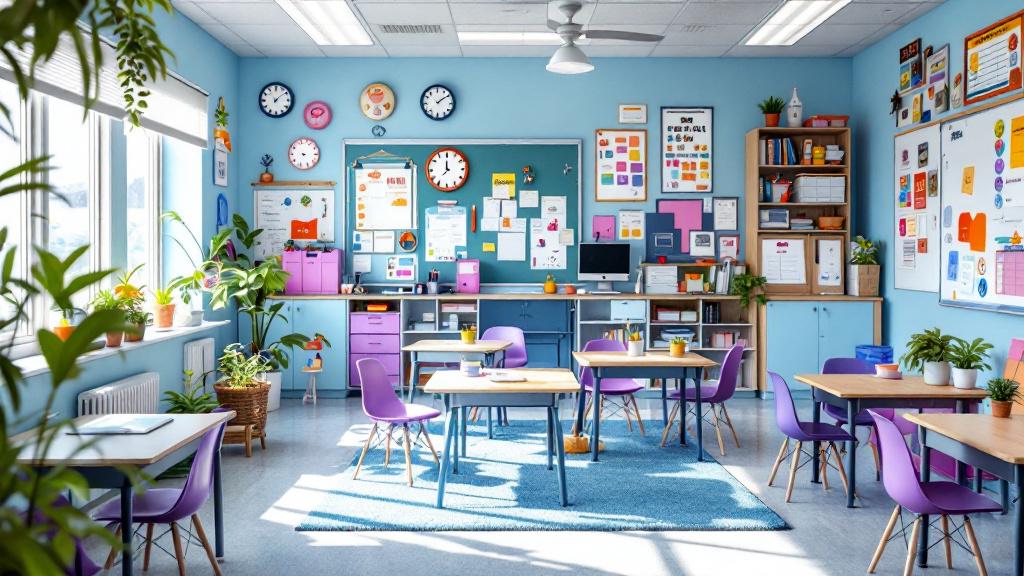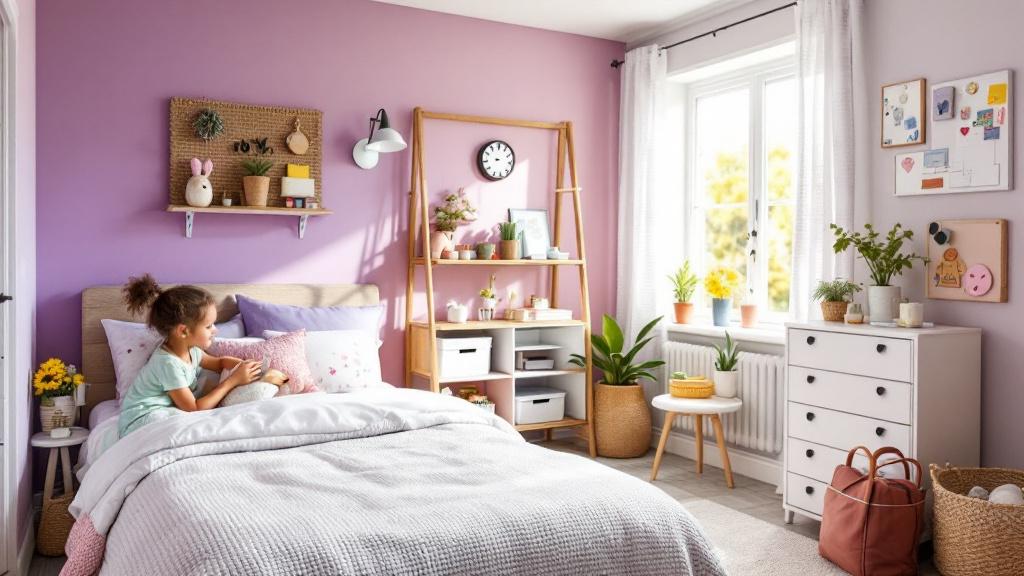Understanding the Critical Role of Sensory Processing in Autism Interventions
In home-based ABA therapy for children with autism, sensory considerations are fundamental to developing effective, personalized interventions. Recognizing the diverse sensory sensitivities and preferences of each child enables caregivers and therapists to create supportive environments that promote learning, reduce distress, and foster social and communication skills. This comprehensive approach integrates sensory strategies with behavioral techniques, ensuring that children thrive both during therapy sessions and in everyday life at home.
The Foundation of Sensory Processing in Autism
What are the signs of sensory sensitivities in children with autism?
Children with autism often exhibit a variety of sensory sensitivities. These can include aversions to certain textures, sounds, lights, or smells, which may cause discomfort or distress. Some children may avoid wearing certain clothing tags or be bothered by loud noises and bright lights. Conversely, some children actively seek sensory input through movement, touching objects, or sensory play such as spinning or bouncing. Recognizing these behaviors is essential for creating supportive environments.
How do sensory processing issues affect behavior and communication?
Sensory sensitivities can significantly influence a child's behavior and ability to communicate. When overwhelmed by sensory input—a situation known as sensory overload—they may become anxious, frustrated, or have meltdowns. They might also display repetitive behaviors like hand-flapping or rocking as coping mechanisms. These behaviors serve as ways for children to express their sensory needs or manage discomfort. Difficulties in processing sensory stimuli can impair social interaction and hinder the development of language and communication skills.
How common is sensory processing disorder (SPD) among children with autism?
Research indicates that sensory processing difficulties are prevalent among children with autism. It is estimated that between 5% and 16% of individuals on the autism spectrum experience Sensory Processing Disorder (SPD). SPD involves challenges in neurologically processing sensory information, leading to hypersensitivity (over-responsiveness) or hyposensitivity (under-responsiveness). These sensory issues require targeted interventions to help children navigate their environments effectively.
Why are sensory considerations important in ABA therapy?
Integrating sensory strategies into ABA therapy is vital for supporting children with autism. By observing each child's sensory preferences and triggers, therapists can tailor interventions that include sensory breaks, calming tools, and sensory-friendly activities. These adjustments improve the child's comfort and engagement, making it easier to learn new skills, communicate, and regulate emotions. Collaborative efforts with caregivers ensure that sensory-friendly practices are consistent across home and school settings, fostering a more supportive overall environment.
| Sensory Behaviors | Triggers and Functions | Interventions and Strategies |
|---|---|---|
| Rocking, hand-flapping | Overwhelm, stress | Sensory breaks, calming environments |
| Avoidance of textures or sounds | Discomfort, sensory aversion | Environmental adjustments, sensory diet |
| Active seeking of input | Need for stimulation | Sensory play, movement activities |
Incorporating sensory integration activities like tactile play, obstacle courses, and swinging can help children process sensory information more effectively. Modifying spaces with soft lighting, calming corners, and sensory toys creates a nurturing environment. Interventions focusing on gradual desensitization and positive reinforcement support children in managing their reactions to sensory stimuli, leading to improved emotional regulation and participation in daily activities. Collaboration among therapists, parents, and teachers is crucial for creating consistent, sensory-smart routines that promote development.
By understanding and addressing sensory sensitivities through ABA therapy, children on the autism spectrum can build better coping skills, improve their communication, and enjoy greater participation in everyday life, supporting their long-term growth and resilience.
Identifying Sensory Challenges and Triggers at Home
Observation methods for sensory behaviors
Recognizing sensory challenges in children with autism begins with careful observation. Watching how children respond to different environments and stimuli helps identify specific sensitivities. Observers should note reactions to textures, sounds, lighting, and touch, as well as behaviors like rocking or hand-flapping that may serve as coping mechanisms.
Keeping a behavioral diary can be helpful. Documenting what activities or settings precede signs of distress offers insight into potential sensory triggers. Video recordings during daily routines allow for detailed analysis, especially for subtle signs of discomfort.
Involving family members and teachers in this process ensures a comprehensive view across settings. Combining their observations with professional input from occupational therapists can refine understanding and intervention strategies.
Common triggers for sensory overload
Sensory overload happens when stimuli exceed a child's capacity to process them comfortably. Common triggers include loud noises, bright lights, strong smells, or rough textures. Clothing tags, certain fabrics, or visual clutter can also cause discomfort.
Bright environments, crowded spaces, or fast-moving activities may contribute to overwhelm. For some children, unexpected changes or unpredictability heighten sensory stress.
Understanding these triggers allows caregivers to adapt environments proactively. Using tools like noise-canceling headphones or dimming lights can mitigate overload and support better engagement.
Subtle signs indicating sensory distress
Detecting early signs of sensory distress is crucial in preventing full-blown meltdowns. Subtle cues might include clenched fists, tense body posture, or increased blinking. Changes in facial expression or avoidance behaviors—like turning away or covering ears—are indicators of discomfort.
Children may also exhibit decreased eye contact, withdrawal from activities, or increased self-stimulatory behaviors. Recognizing these signs early enables timely interventions, such as offering sensory breaks or calming activities.
Training caregivers to notice these subtle signals enhances their ability to respond appropriately, helping children feel supported and reducing the likelihood of distress.
Incorporating the observations of sensory behaviors and triggers into daily routines creates a more supportive environment. Combining these insights with tailored interventions, such as sensory breaks, environmental modifications, and calming strategies, helps children better manage their sensory experiences and participate more comfortably in daily life.
Creating Sensory-Friendly Home Environments
 Supporting children with autism through sensory considerations involves making thoughtful modifications to their home environments. These adjustments aim to reduce sensory overload and foster calmness, helping children better self-regulate and engage in daily activities.
Supporting children with autism through sensory considerations involves making thoughtful modifications to their home environments. These adjustments aim to reduce sensory overload and foster calmness, helping children better self-regulate and engage in daily activities.
One important aspect is creating designated calming spaces where children can retreat when overwhelmed. These spaces can be equipped with soft lighting, calming visuals, and sensory tools such as weighted blankets, textured toys, or fidget objects. Visual supports like schedule boards and quiet corners help children anticipate routines and manage sensory input more effectively.
Incorporating sensory play into daily routines further enhances a child's ability to process sensory information positively. Activities like sensory bins filled with rice or beans, tactile play with textured materials, or gentle swinging can serve as sensory diets—structured activities tailored to meet individual needs. These activities not only promote sensory exploration but also improve motor skills and emotional regulation.
To effectively support sensory regulation at home, modifications such as organized storage for sensory toys, designated areas for physical activities, and controlled lighting can significantly minimize triggers that lead to meltdowns or stress. Using tools like weighted vests or deep-pressure input during moments of high arousal can further calm the child.
Overall, creating a sensory-friendly environment involves understanding each child's unique sensitivities, modifying spaces to decrease overstimulation, and incorporating meaningful sensory activities. This comprehensive approach helps children feel more secure, engaged, and capable of participating fully in everyday life.
| Environment Feature | Description | Benefits |
|---|---|---|
| Calming sensory spaces | Quiet zones with soft lighting and sensory tools | Reduce overload, promote relaxation |
| Sensory equipment | Weighted blankets, textured toys, visual supports | Enhance self-regulation and engagement |
| Organized activity areas | Dedicated spaces for physical and tactile play | Support sensory integration and safety |
| Routine modifications | Visual schedules, sensory diets, tool use | Improve predictability and comfort |
Supporting children with autism at home by making these sensory-friendly modifications ensures they are supported emotionally, physically, and socially. Tailoring environments to their sensory needs creates a nurturing space that encourages development, independence, and happiness.
Integrating Sensory Strategies into ABA Therapy Plans
What strategies can be used to address sensory sensitivities within ABA therapy?
Addressing sensory sensitivities effectively involves a mix of environmental adjustments and targeted activities. To begin, creating sensory-friendly environments is crucial. This can include adjusting lighting, reducing noise levels, and using soft textures to minimize overstimulation. Such modifications help children feel more comfortable and open to engagement.
Incorporating sensory activities is another vital strategy. Activities like sensory bins filled with tactile materials, swinging, and proprioceptive exercises such as jumping or heavy work can promote sensory integration. These activities allow children to process sensory input in a controlled manner, leading to better self-regulation.
ABA employs specific techniques like gradual desensitization, where children are systematically exposed to sensory stimuli to lessen sensitivity over time. Teaching coping strategies, such as deep breathing or using calming tools, supports children in managing sensory overload.
Collaboration with occupational therapists enhances these efforts by integrating specialized sensory tools like fidget toys, weighted blankets, or noise-canceling headphones. These tools can be incorporated into daily routines at home and school.
Overall, an individualized, multidisciplinary approach combining modifications, sensory activities, and behavioral techniques can significantly improve a child's ability to handle sensory sensitivities. Tailoring interventions based on each child's sensory profile ensures a supportive environment where children can thrive and participate more comfortably.
Desensitization and Tolerance Building Techniques
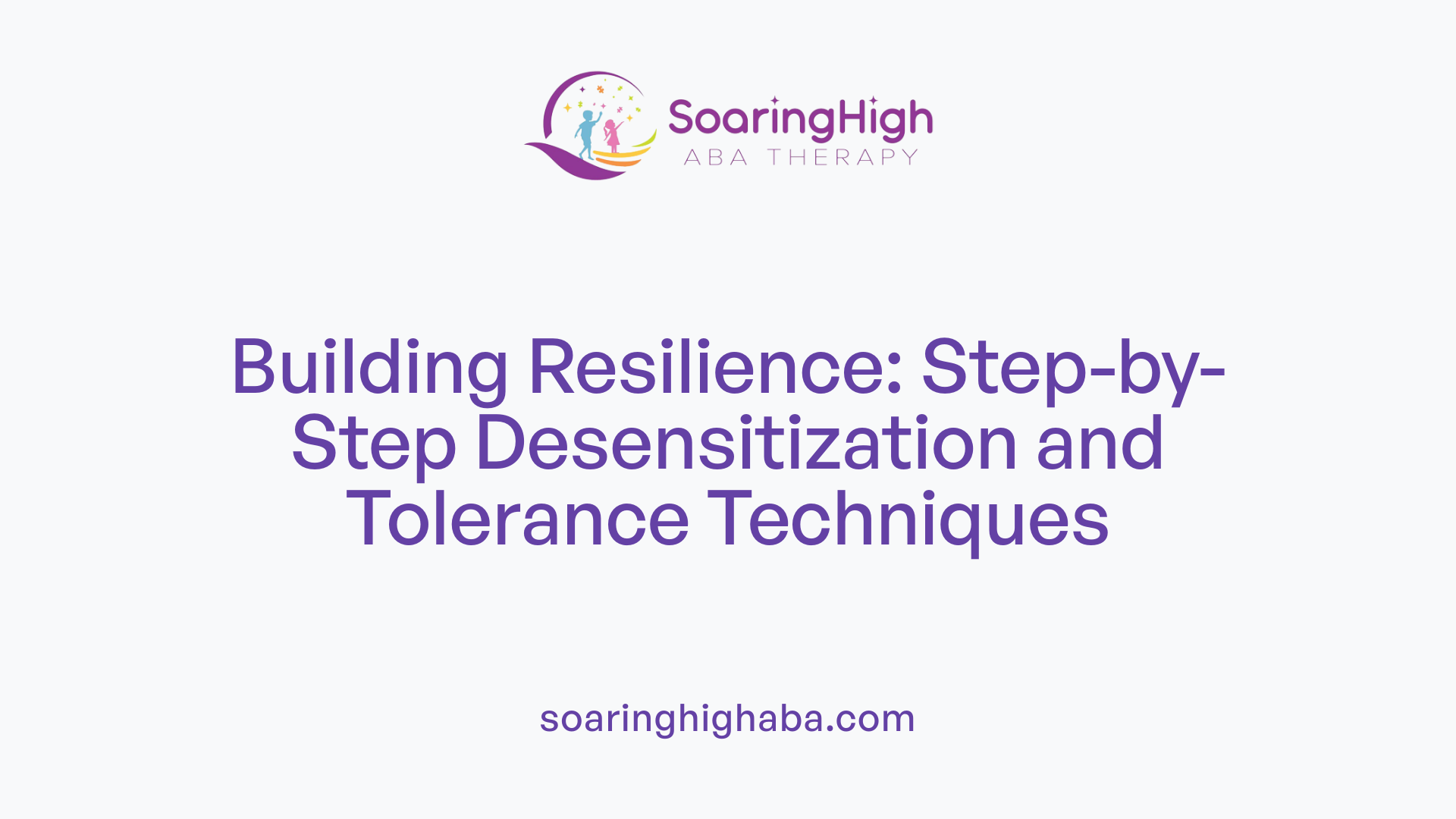
Why are sensory sensitivities significant in developing effective ABA interventions?
Sensory sensitivities are common among children on the autism spectrum and can greatly impact their ability to participate in therapy and everyday activities. When children are overwhelmed by stimuli such as loud sounds, bright lights, or certain textures, their reactions can include stress, anxiety, or meltdowns. These responses can hinder progress during intervention and affect overall development.
Understanding each child's unique sensory profile allows therapists to customize ABA strategies. For example, incorporating sensory diets—structured activities that include calming or alerting sensory input—helps regulate sensory systems. Environmental modifications like soft lighting or noise filters, along with coping techniques such as sensory breaks, can reduce overload.
Techniques like gradual desensitization involve slowly exposing children to sensory stimuli in controlled ways. This method aims to increase their tolerance over time, making stimuli more manageable and less distressing. Sensory integration activities, including tactile play or movement-based exercises, are also vital in helping children process sensory information effectively.
By blending sensory considerations with ABA principles, therapists can craft more engaging and supportive interventions. This approach not only alleviates sensory challenges but also promotes better emotional regulation, communication, and social participation. Ultimately, addressing sensory sensitivities through targeted techniques enhances therapy outcomes and supports children in navigating their environment more comfortably.
How does gradual exposure to stimuli work?
Gradual exposure is a step-by-step process where children are introduced to challenging sensory inputs in small, manageable doses. Starting with less intense stimuli, such as a soft touch or gentle sound, therapists slowly increase the intensity or duration of exposure as the child shows readiness.
This incremental approach helps prevent overwhelming reactions and builds confidence in the child's ability to handle different stimuli. Over time, the child learns coping mechanisms and habituates to stimuli, reducing anxiety and defensive behaviors.
Reinforcement strategies are essential in helping children participate in sensory activities.
Positive reinforcement, such as praise, tokens, or preferred activities, encourages children to engage willingly in sensory tasks. Reinforcements are used to reward calm or tolerant behaviors, strengthening their ability to manage sensory input.
Monitoring progress over time ensures that interventions are effective.
Therapists track behaviors, emotional responses, and engagement levels during sensory exposure exercises. This data helps in adjusting the intensity and type of stimuli, ensuring steady progress toward increased sensory tolerance.
| Technique | Description | Benefit |
|---|---|---|
| Gradual Exposure | Stepwise introduction of stimuli over time | Builds tolerance, reduces fear or anxiety |
| Positive Reinforcement | Reward-based encouragement for successful engagement | Promotes participation and positive behaviors |
| Environmental Adjustments | Modifying space to reduce sensory overload | Creates a calming and manageable environment |
| Sensory Breaks | Scheduled breaks to prevent overload | Helps maintain emotional regulation |
Creating a nurturing setting based on these strategies fosters resilience and emotional well-being. Therapists, families, and educators work collaboratively to implement these techniques, supporting children to better tolerate and manage sensory stimuli in various environments.
Utilizing Positive Reinforcement for Sensory Tolerance and Engagement
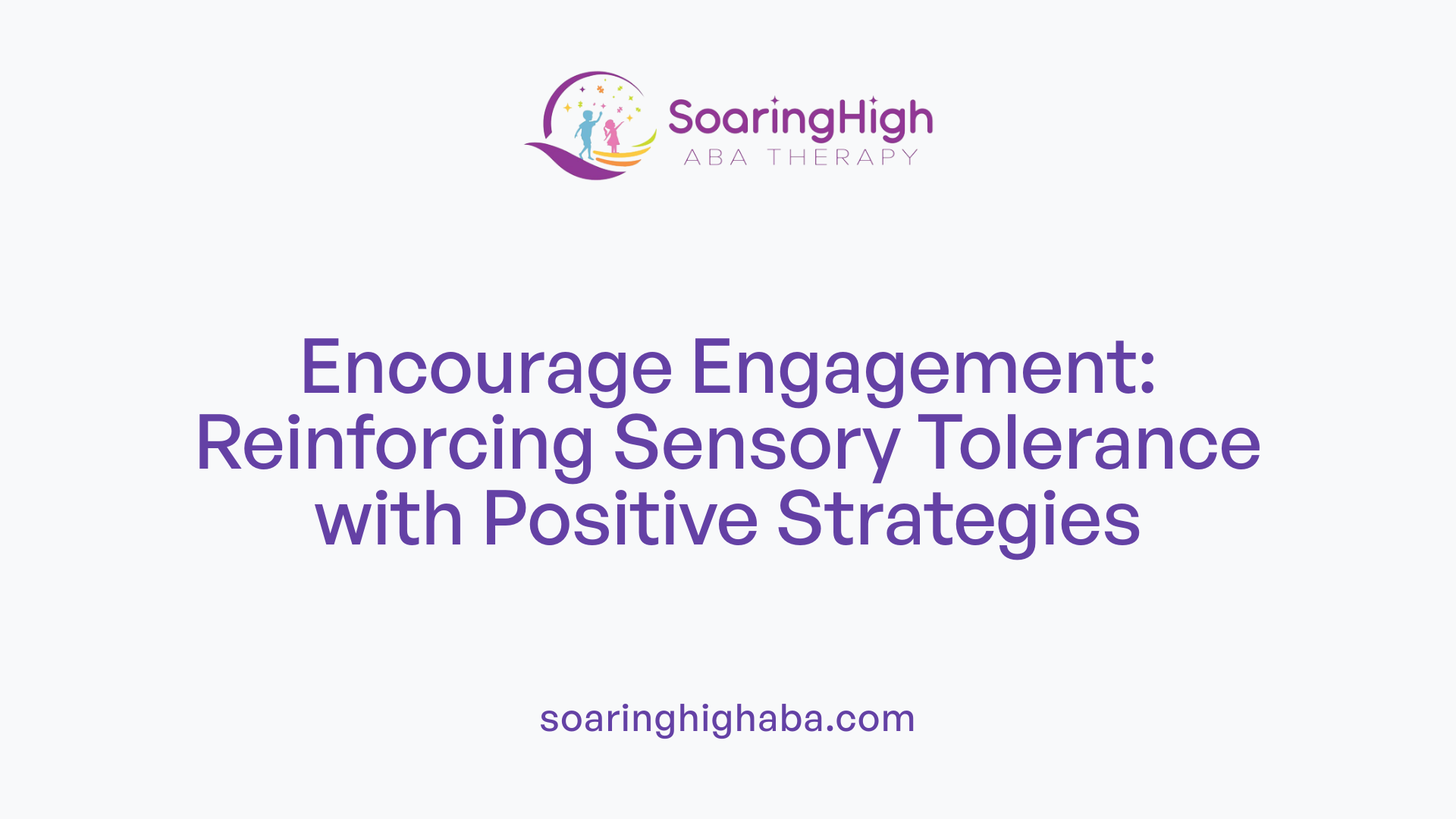
How do sensory issues influence the development of ABA therapy plans?
Sensory challenges play a vital role in shaping ABA therapy approaches. Each child with autism exhibits unique sensory sensitivities, making individualized assessment essential. Therapists carefully observe how children react to textures, sounds, lights, and other stimuli, which helps in crafting personalized plans.
Incorporating sensory strategies into ABA involves using positive reinforcement to encourage adaptive behaviors. For example, rewarding a child for participating in sensory activities like swinging or finger painting can promote engagement and reduce avoidance behaviors. Sensory breaks and calming tools are integrated into routines to help children manage sensory overload and stay focused.
Sensory integration techniques, such as sensory diets and tactile play, are employed alongside ABA methods. These help improve the child's ability to process sensory input more effectively, fostering better emotional regulation and resilience. By systematically reinforcing coping behaviors and teaching self-regulation, ABA therapy can significantly enhance a child's sensory tolerance.
Ultimately, considering sensory factors within ABA plans leads to more effective interventions. It ensures children are supported in ways that respect their sensory preferences and needs, boosting their confidence and ability to participate in everyday activities.
Partnering with Families and Occupational Therapists

How can collaborative planning enhance sensory ABA therapy?
Collaborative planning is essential in creating an effective sensory ABA therapy program. It involves working closely with families and occupational therapists to understand each child's unique sensory profile, triggers, and responses. By sharing observations and insights, all parties can develop tailored strategies that address specific sensory sensitivities. This teamwork ensures consistency in intervention approaches across home, school, and therapy settings, promoting smoother progress.
What training can caregivers receive to support sensory strategies?
Training caregivers is crucial for the success of sensory ABA interventions. Caregivers learn to implement sensory-friendly modifications, such as adjusting lighting, reducing noise, or providing calming sensory activities like tactile play or movement routines. They are also guided on recognizing signs of sensory overload, using positive reinforcement, and incorporating sensory breaks into daily routines. This education empowers caregivers to support ongoing sensory regulation outside of therapy sessions.
How do we ensure consistency of sensory strategies across environments?
Ensuring consistency involves regular communication and coordination between therapists, teachers, and family members. Sharing detailed plans, checklists, and visual supports helps all caregivers apply similar techniques, such as providing sensory breaks or using calming tools like noise-canceling headphones. Creating a sensory-smart environment at home and school—where triggers are minimized and preferred sensory activities are available—helps children develop better sensory tolerance and reduces stressful reactions.
Below is a summary table for clear understanding:
| Strategy Area | Actions | Benefits |
|---|---|---|
| Collaborative Planning | Joint assessments, shared goals, regular meetings | Tailors interventions, promotes consistency |
| Caregiver Training | Sensory strategies, recognizing overload signs | Empowers care at home and in daily life |
| Cross-Environment Consistency | Using similar cues, sensory tools, routines | Reduces confusion, enhances progress |
Adopting these collaborative and consistent approaches maximizes the effectiveness of ABA therapy, fostering better sensory integration and overall development for children with autism.
Monitoring Progress and Adjusting Interventions Over Time
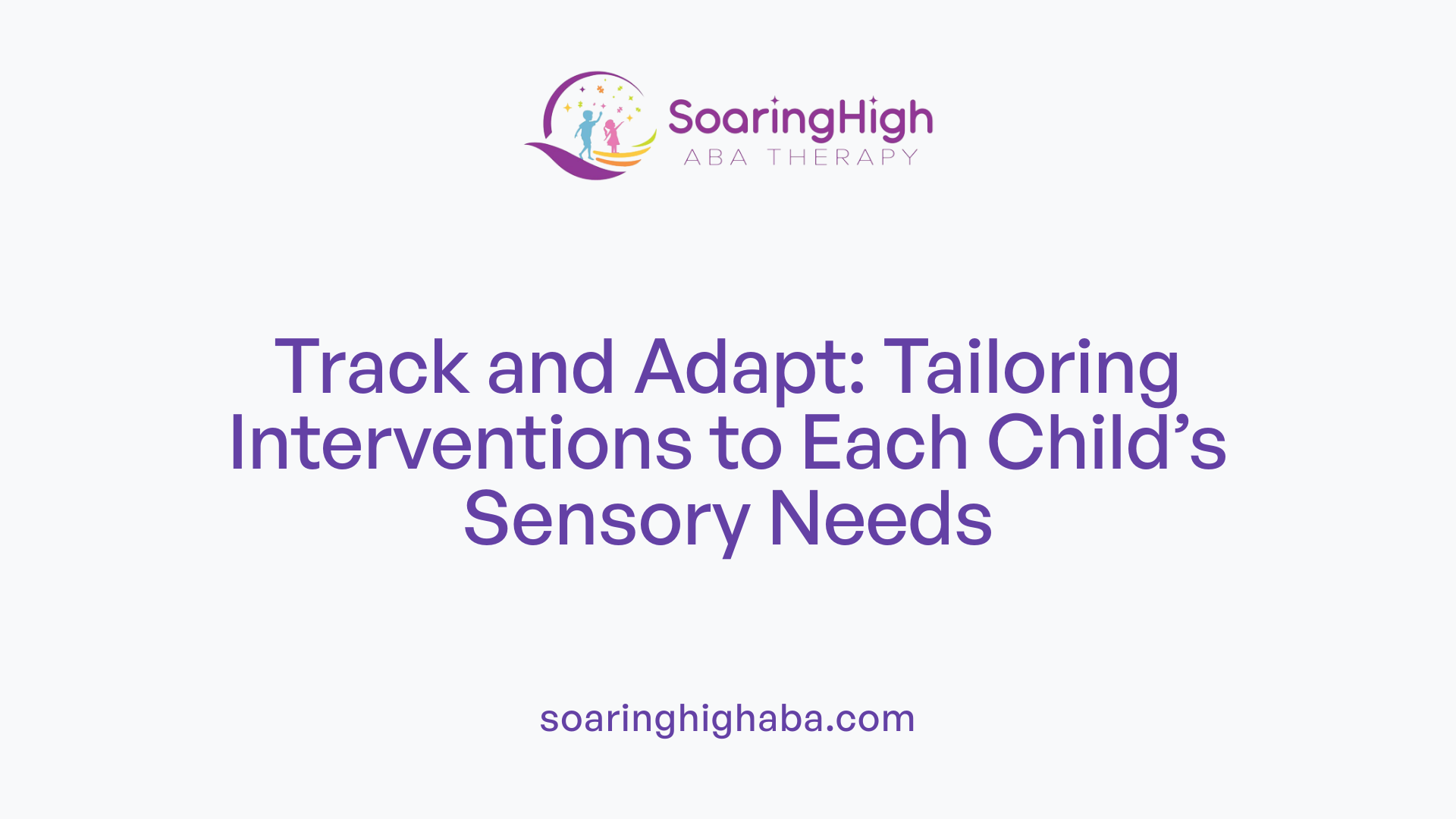
Why are sensory sensitivities significant in developing effective ABA interventions?
Sensory sensitivities are very common among children with autism and can greatly impact their ability to participate in therapy and daily life. When therapists understand each child's unique sensory processing patterns, they can create more personalized interventions. This might include sensory diets tailored for the child, modifications to their environment, and specific coping strategies.
Addressing sensory challenges through techniques like gradual desensitization and sensory integration reduces the likelihood of overload, helping children better tolerate different stimuli. These strategies improve their engagement, promote learning, and foster social interactions.
By paying attention to sensory sensitivities, ABA therapists can design plans that support emotional regulation and resilience. This personalized approach ensures that interventions are not only effective but also promote overall well-being.
How is data collection and analysis used to track progress?
Careful data collection allows therapists to observe how a child's sensory responses change over time. Through regular recording of behaviors such as meltdowns, avoidance, or engagement, professionals can identify patterns and measure improvements. This ongoing assessment helps determine if current strategies are effective or need modification.
Behavior tracking tools may include visual graphs, checklists, or digital logs. By analyzing this data, therapists can identify which sensory activities promote calmness and participation, guiding future sessions.
How do clinicians evaluate sensory success?
Success in managing sensory sensitivities can be seen through increased tolerance to stimuli, fewer behavioral outbursts, and improved social interaction. Clinicians also look for signs like the child's ability to communicate discomfort earlier or use coping tools independently.
Progress might involve a child resisting sensory overload better or engaging in sensory activities with less distress. When positive changes are observed, goals are adjusted to build on these skills.
How are strategies adapted as the child's needs evolve?
Sensory needs change as children grow and develop new skills. Therapists adjust interventions based on ongoing assessment results. For example, if a child begins to tolerate certain textures, activities involving more complex tactile input might be introduced.
Environmental modifications, like adding calming lights or noise buffers, may also be updated to support new sensitivities or preferences. Moreover, new coping mechanisms or sensory tools are incorporated as the child gains better self-regulation.
By continuously reviewing data and observing the child's responses, ABA programs stay flexible and responsive. This dynamic process ensures that interventions remain relevant and effective, leading to long-term progress.
Long-Term Benefits of Sensory-Inclusive ABA
Why are sensory sensitivities significant in developing effective ABA interventions?
Sensory sensitivities are common among children with autism and can deeply impact their ability to participate in therapy and daily life. These sensitivities involve reactions to textures, sounds, lights, or other stimuli, which can cause discomfort, stress, or overload.
Understanding each child's unique sensory profile enables therapists to customize ABA approaches. For example, incorporating sensory diets—structured activities like heavy work or calming sensory activities—helps regulate sensory systems. Environmental modifications, such as adding soft lighting or sensory toys, reduce triggers of sensory overload.
Interventions like gradual desensitization teach children to cope with overwhelming stimuli over time. Sensory integration therapy, combined with ABA, promotes more effective sensory processing.
When sensory sensitivities are addressed within ABA plans, children tend to engage more fully, learn better, and develop social skills more efficiently. Managing sensory difficulties minimizes meltdowns and increases participation in both therapy and everyday activities.
By tailoring interventions to sensory needs, practitioners foster emotional regulation and resilience, supporting long-term progress and well-being.
Building a Comprehensive, Sensory-Informed Approach
Why is it important to assess sensory needs holistically?
A thorough understanding of a child's sensory profile is fundamental for effective ABA therapy. Each child on the autism spectrum has unique sensory sensitivities, whether hypersensitivity (over-responsiveness) or hyposensitivity (under-responsiveness), which can significantly impact their daily functioning.
Therapists begin with an in-depth assessment, often including observations and reports from caregivers and occupational therapists. This helps identify specific triggers—such as textures, sounds, or lights—that may cause distress or prompt maladaptive behaviors.
Creating an individualized sensory profile allows the development of tailored intervention plans. These plans incorporate sensory-friendly activities and modifications, such as sensory breaks or calming routines, aligning therapy with each child's sensory preferences.
How can sensory strategies be integrated across daily routines?
Incorporating sensory strategies into everyday routines ensures consistent support for sensory regulation. For example,
- Including sensory breaks during homework or play to prevent overload.
- Using calming tools like weighted blankets or soft lighting at home and in the classroom.
- Embedding sensory activities such as swinging, tactile play, or water-based tasks into daily schedules.
These practices help children better manage sensory input, leading to less stress and more engagement.
ABA therapy supports this integration by observing how sensory inputs influence behavior and adjusting interventions accordingly. Techniques like gradual desensitization and reinforcement of adaptive behaviors facilitate long-term progress.
What is the role of multidisciplinary collaboration?
Addressing sensory needs effectively requires teamwork among professionals, caregivers, and educators. Collaboration with occupational therapists is essential because they specialize in sensory integration therapies, which complement ABA strategies.
Shared goals include creating sensory-friendly environments — modifying spaces to reduce triggers and adding activities like tactile exploration or movement games.
Family involvement is also crucial. Educating caregivers about sensory cues and how to implement strategies at home ensures consistency. This might include establishing a conducive environment with sensory toys, visual supports, and designated calming areas.
In summary, a comprehensive approach combines holistic assessments, sensory-informed routines, and collaborative efforts to support children in managing sensory challenges. This integrated effort enhances the effectiveness of ABA therapy, fostering greater emotional regulation, improved social interaction, and overall well-being.
Enhancing Therapy Outcomes through Sensory Integration
Incorporating sensory considerations into home-based ABA therapy is essential for addressing the unique sensory profiles of children with autism. It promotes better emotional regulation, reduces behavioral challenges, and supports skill acquisition across communication, social participation, and independence. Collaborating with caregivers and multidisciplinary teams ensures that sensory strategies are consistently implemented across environments, leading to more meaningful and lasting progress. By prioritizing sensory needs within ABA programs, therapists and families can foster a nurturing setting that empowers children to reach their full potential and improve their quality of life.
References
- Discover Sensory Benefits of Aba for Those with Autism
- Exploring the Benefits of ABA for Sensory Issues
- ABA Therapy and Sensory Issues: Walking the Journey Together
- Can ABA Help with Sensory Issues? Discover the Benefits
- Ten simple sensory strategies for autistic children
- 10 Sensory activities for autism
- Part 2: Sensory-Friendly Strategies for Home
- Home Activities | STAR Institute
- Interventions Targeting Sensory Challenges in Children With Autism ...



























































































